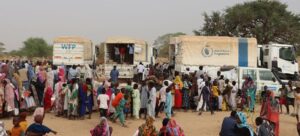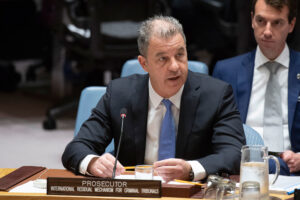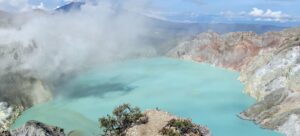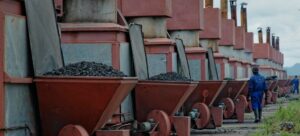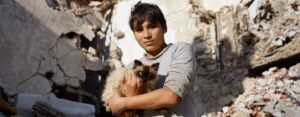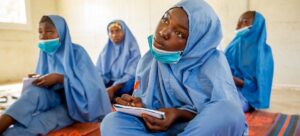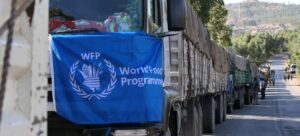Stéphane Dujarric told correspondents at the regular noon briefing that the opportunity to provide services and support to the millions of Sudanese who are suffering due to the six weeks of fighting between national army forces and their powerful rival militia, the RSF, was only feasible in areas where the ceasefire holds.
Relative calm has prevailed since the truce was reached between the feuding generals, in Jeddah, a week ago, but news reports suggest that flare ups in recent days are threating the continuation of the United States and Saudi-monitored ceasefire.
UNICEFSudan
Aid trucks en route
“The Office for the Coordination of Humanitarian Affairs (OCHA) said that some 20 trucks carrying supplies from the UN Children’s Fund (UNICEF) and the International Organization for Migration (IOM) are now on their way to different parts of Sudan today”, he said.
Meanwhile, the World Food Programme (WFP) has reached more than 500,000 people in nine states with food and nutrition support since restarting distributions about three weeks ago.
“WFP is also planning distributions in Central Darfur and Northern State. Yesterday, trucks loaded with food aid arrived in Wadi Halfa, and today in Port Sudan, WFP started providing food to some 4,000 new arrivals”, Mr. Dujarric continued.
According to UN agencies, six newborn babies died at a hospital in the city of Eld’aeen in East Darfur in just one week, due to problems including lack of oxygen amid electricity blackouts.
The World Health Organization (WHO) said that more than 30 newborns have died at the hospital since the start of the fighting, Mr. Dujarric continued. WHO is in touch with healthcare providers to see what it can do to support, he said.
Half the population needs aid
An estimated 24.7 million people, or half the population, require urgent humanitarian assistance and protection, according to the UN’s top humanitarian official in the country, Abdou Dieng.
Mr. Dieng noted in a statement published late on Wednesday that this number had risen by 57 per cent since the beginning of the year.
He said that aid partners have provided food for over 500,000 people in the country since the beginning of May, in addition to supplying water, healthcare and hygiene support to hundreds of thousands of displaced people, whenever access was possible.
Mr. Dieng reiterated humanitarians are ready to deliver assistance to over four million in need and called on the relevant authorities to allow aid workers to move supplies “swiftly and safely”.
Meanwhile, the World Health Organization (WHO) said that more than two-thirds of hospitals are out of service because of fighting in Sudan, while in areas that did not see fighting, medical facilities are running low on supplies and staff, fuel, oxygen and blood bank services.
Rape, sexual violence
The UN Special Representative on Sexual Violence in Conflict, Pramila Patten, also highlighted her grave concern on Wednesday over multiple reports of sexual violence against women and girls, including allegations of rape, by combatants on both sides.
“I am very alarmed by emerging reports of sexual violence in different parts of Sudan and urge all parties to the conflict to comply with international human rights and humanitarian law, and in particular, to guarantee immediate and complete cessation of all violence against civilians, including sexual violence, as per their respective commitments” made in ceasefire terms.
She said it was “imperative that unfettered access to services is guaranteed by all parties”, calling on them to instantly “issue strict command orders that prohibit sexual violence, directed at their own forces as well as groups and individuals fighting on their side or under their command, and put in place mechanisms to adequately monitor the conduct of all armed elements they control”, she added.
